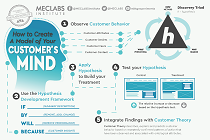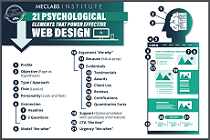February 23, 2001
Article
|
SUMMARY:
No summary available
|
|
*********************
FinancialMarketingBiz From MarketingSherpa.com
********************* Feb 23, 2001 - Vol. II, Issue 7
Please forward *without* cutting. Thank you!
1) NEWS: OffRoad Capital, Citibank, EAB, ABN Amro, Motley Fool,
SmartMoney.com, Ameritrade
2) CASE STUDY: ESL Credit Union Increases Campaign Response
Rates By 50% by Mining Customer Data
3) EXCLUSIVE INTERVIEW: Waino Pihl and Kathleen Shear of Arthur
Andersen Stress Good Ole’ Fashioned Customer Service for eFS
4) More Headlines
Free subscriptions at: http://www.financialmarketingbiz.com
*********************
NEWS
*********************
Sponsor: eFinanceMarketing Consultants
~~~~~~~~~~~~~~~~~~~~~~~~~~~~~~~~~~~~~~~~~~~~~~~~~~~~~~~~~~~~~
Can You Do It Within Your Budget?
In 2000 Ameritrade spent an estimated $188 million on
marketing, according to Robertson Stephens. Can you do the
same? eFinanceMarketing helps companies of all sizes map out
winning, cost-effective and profitable marketing
strategies.
http://www.efinancemarketing.com
~~~~~~~~~~~~~~~~~~~~~~~~~~~~~~~~~~~~~~~~~~~~~~~~~~~~~~~~~~~~~
*OffRoad Decides Not Spend More on National Advertising
BACK IN FROM THE COLD: Online direct securities firm OffRoad
Capital recently announced the closing of $6 million in new
financing as well as a “restructuring to reduce expenses.” When
asked how much of the new money will be earmarked for marketing,
spokesperson Pat Harden said that the funds will be used for
general corporate purposes and that no new national advertising
effort is to be executed at the present time. Harden explained
that OffRoad’s marketing efforts will be focused on institutional
business development and the private-labeling of OffRoad’s
private marketplace system.
OffRoad rose out of obscurity last year with a series of print
consumer advertisements in major publications, including The Wall
Street Journal, that featured a man outside a restaurant window,
shivering in the snow and looking helplessly at a group of people
laughing and having dinner inside (an analogy to the type of
private equity investing offered by OffRoad that allows everyone
to participate.) The last consumer ad ran in June 2000, with an
extension targeting financial advisers running until early
November 2000. Kirshenbaum Bond & Partners created the ads and
is the company’s agency of record. “Our brand-building efforts
were very successful,” added Harden. “But we have to be prudent
in the current environment, so we have to be focused with our
marketing expenditures.”
http://www.offroadcapital.com
http://www.kb.com
*Citibank to Acquire EAB; More Woes for EAB Parent ABN Amro
SWALLOWED WHOLE: Citibank announced its intention to acquire
Long Island-based European American Bank from ABN Amro, the
Netherlands’ largest bank, for $1.6 billion plus the assumption
of $350 million in preferred stock. EAB is a state-chartered
bank with $11.5 billion in deposits, with $15.4 billion in assets
and 97 branches; the merger is expected to make Citibank the
leading holder of deposits on Long Island, one of the greater
metro NYC area’s most active in consumer finance.
In continued efforts to acquire assets and accounts, it is
expected that the acquisition will help Citibank migrate assets
to its online offerings, although it has not been made clear how
the acquisition will affect the two’s online presences.
Separately, ABN Amro plans to cut another 3,500 jobs on top of
2,500 previously announced over the next four years, in an effort
to reduce costs; the bank reported that its net profit sank 3
percent to 2.5 billion euros ($2.25 billion) in 2000 from 2.57
billion euros in 1999. Calls to Citibank, EAB, and ABN Amro were
not returned.
http://www.citibank.com
http://www.eab.com
http://www.abnamro.com
* Motley Fool Reduces Staff; Discontinues "Soapbox.com"
LAST LAUGH: The Motley Fool announced that it has eliminated 115
positions from its U.S. and U.K. offices and will discontinue
Soapbox.com, the “peer-to-peer knowledge exchange” it launched in
June 2000 where amateur investors sold their own stock research.
All employees affected by this decision will receive severance
packages of at least one month's wages, according to Bill Dixon,
a spokesperson for The Motley Fool. Said CEO Pat Garner in a
statement, “We will ensure that the Fool continues to fulfill its
unique role as the 'trusted advisor' for the 30 million people we
reach monthly both online and offline.”
http://www.fool.com
* SmartMoney.com Signs Licensing Agreements with Fidelity,
TheStandard.com, and Nasdaq.com
REVENUE STREAM: Not just a personal finance news and information
portal anymore, SmartMoney.com announced licensing agreements
with Fidelity Investments, TheStandard.com and Nasdaq.com. Under
the terms of the individual agreements, Smartmoney.com will
provide these companies with proprietary investment tools,
original editorial content, and other financial applications for
their Web sites. SmartMoney.com has signed more than 70
licensing customers from the financial services and other
industries in the past year. [Note: We interviewed Lou Tosto,
Associate Publisher and General Manager of SmartMoney.com, in our
January 24, 2001 issue.]
http://www.financialmarketingbiz.com/sample.cfm?contentID=1377
* Ameritrade to Launch Three New Online Trading Brands
ALL THINGS TO ALL PEOPLE: In efforts to tailor its products to
cover all segments of online investing, Ameritrade said it will
soon offer three new trading brands. Ameritrade Pro will be
geared towards the highly active professional and semi-
professional trader, while Ameritrade Plus will provide a higher
level of personalized investing services. The third, Freetrade,
is intended to be a virtual, commission-free transaction
platform. The regular Ameritrade brand will continue to exist as
the value-oriented approach to self-directed investing.
Ameritrade Pro, which will offer quick trading executions and
access to more advanced stock quotes, is being created to
capitalize on the firm's planned $67.3 million acquisition of
Houston-based software provider TradeCast, which offers direct-
access trading through online trading software that connects
customers to exchanges. Ameritrade Plus will be the most
expensive offering, the company said in a statement, without
mentioning what features will be the focus of the new brand.
http://www.ameritrade.com
*****************************************************************
CASE STUDY: ESL Credit Union Increases Campaign Response Rates By
50% by Mining Customer Data
*****************************************************************
CHALLENGE
ESL Federal Credit Union, a full-service credit union
serving Eastman Kodak employees and their families, represents
$1.8 billion in assets and has 165,000 members, making it one of
the largest credit unions in the nation. Historically, ESL used
its in-house Marketing Customer Information File to define a
target audience based on age, income, psychographic coding, and
approximately 20 other customer-specific data elements.
However, ESL was having difficulty accurately identifying
likeliest prospects for products such as Internet banking. So in
January 2000, the credit union decided it was time to begin leveraging more customer data in its marketing efforts. “The
goal for us was to find out which of our customers had the
highest propensity to purchase which product,” explains Roger
Rassman, Vice President, Marketing Manager. “With that
intelligence, we would be better able to target our product and
service offerings to those most likely to qualify and purchase.”
CAMPAIGN
With the help of an eFS solutions enabler, Digital
Insight, ESL set out to uncover detailed customer information by
applying advanced targeted marketing techniques. The project
consisted of collecting and massaging data that consisted of more
than 1,000 attributes per household.
In modeling that data, ESL’s portfolio was scored at the
customer-level, and the entities were rank-ordered into twenty
segments —- or “twentiles” —- with a segment number of 20
indicating the highest propensity to respond/purchase, and 1
indicating the lowest propensity. The scores and the segment
numbers from this model were then appended to ESL’s database, so
the credit union could use these scores and segments in its
direct mail and telemarketing programs for Internet banking, auto
loans and home equity loans.
ESL also employed the results of propensity modeling into its
Internet channel in an effort to speed and streamline the loan
application and approval process and improve the online customer
experience for the institution’s more than 23,000 Internet
banking users.
RESULTS
Soon after ESL began using more intricate propensity
models based on some 1,100 data elements per household, the
credit union's average campaign response rates increased by 50%.
In addition, because of propensity modeling, each customer
interaction became more profitable. Rassman says, “We now know
from the start whether or not a customer is high propensity —-
whether or not they are likely to buy, are credit worthy, and so
on —- which allows us to close the loan deal within hours, not
the days it used to take. We are currently averaging about 400-
500 loan applications a month this way.”
ESL also counts as an intangible benefit the fact that propensity
models have helped prevent customer attrition by saving ESL from
sending out inappropriate marketing messages to customers.
NEXT: ESL now wants to take the targeted approach to the front
lines —- to provide front-line staff with customer intelligence
instantly so that they know when a member standing before them
(literally, online at a particular given moment) has a very high
propensity, for example, to take out a home equity loan.
ESL Credit Union: http://www.esl.org
Digital Insight: http://www.digitalinsight.com
************************************************************
EXCLUSIVE INTERVIEW: Waino Pihl and Kathleen Shear of Arthur
Andersen Stress Good Ole’ Fashioned Customer Service for eFS
************************************************************
Audit and tax giant Arthur Andersen has been quietly and steadily
grabbing a slice of the consulting pie –- after divesting itself
of its consulting sister company, now called Accenture. We spoke
with two Andersen online business experts: Waino Pihl, Partner,
ecommerce Solutions, Financial Services Industry Practice, and
Kathleen Shear, Knowledge Manager, eBusiness to learn what they
are telling their clients about the eFinance industry these days.
Q: How will general industry consolidation affect the eFS space?
Pihl: Consolidation is a bundling AND an unbundling of FS. Even
the larger firms are selling off product lines because they are
not profitable. Banks sell off mortgage units, credit cards, and
the like. Institutions are refocusing on business lines in which
they feel they can do better.
For example, many banks feel that traditional deposit/credit and
asset management products might do better in the long run. One
scenario is that they will retail the service managed by others,
only lending their established brand name as a distribution
channel. Banks are always asking themselves: is there a better
way for us to brand and sell our product?
Banks have traditionally not been good at this; credit card
issuers, on the other hand, have been quick to respond by seeking
out partnerships and affinity relationships, in order to share
the investment in branding and marketing. Take Canadian bank
CIBC and Canadian grocer Loblaws. CIBC is installing kiosk-
origination units for e-commerce customers, with a Web component,
in the grocer’s stores. CIBC is also partnering with Safeway and
Winn-Dixie in the states to offer the same service.
Partnerships are the way to go. There are also retailers, one of
whom we are working with, who are using their brand to team up
with multiple FS providers –- selecting each based on who is
best-in-breed in different areas, including mortgages, deposits,
and the like -- and then hand-picking each for a partnership.
The retailer will plan to merge all in a portal with these
brands. Essentially, what we are witnessing now are companies
who have little to no experience in traditional FS who are now
picking partners to do an enhanced, stronger marketing job.
Q: Acquisition costs for eFS have traditionally been extremely
high (in the $400-500 per customer range). Will this continue?
How will marketers acquire customers without shouldering huge
acquisition costs?
Pihl: Huge acquisition costs do not make sense. Many large
financial institutions have realized that right now you can
originate some customers in traditional channels cheaper than
over the Internet. What’s wrong with this picture? When you get
beyond the origination, and people start using traditional
delivery channels (i.e., call centers), where are you saving
money? If you are spending more on the Internet channel than on
the traditional, then where’s the value?
As a testament to this, call center volume has surged. It’s
something that eFS players realized a little late. It’s changed
the economic picture a bit. It is essentially squeezing the
electronic application/account opening process into the
traditional process. With the construction of a Web presence,
often some companies create additional steps, without taking away
steps. EFS companies must re-engineer their interface and user
experience in order to gauge efficiency. We always ask: What
gets in the user’s way? Is the process too cumbersome? Do the
pages take too long to download? What’s wrong with the
application? We advise customers on how to modify certain
components so as to create a complete, satisfying experience. It
involves a lot of detailed work. And we always tell clients that
they must deliver on their value proposition.
Q: Will privacy continue to be an issue?
Shear: Customers are taking this seriously as far as safety; we
have witnessed this with the adoption of various encryption
technologies and the like. EFS providers are addressing
concerns, but we have found that consumers in general are still
concerned about submitting personal information over the
Internet. This will become an even bigger concern as financial
services moves into wireless applications. That said, however,
privacy issues are not stopping people from using the Internet as
a channel.
Pihl: Privacy concerns will make the marketer’s job tougher.
They will have to use different, more creative approaches to
getting customer information over the Internet. This is one of
the top 3 issues for eFS marketers, behind the first two
questions they generally ask us, which are “How Do I Get Traffic
to My Web Site?” and “How Can I Process Transactions More
Quickly?”
Q: What do online financial services customers expect in terms
of customer service?
Pihl: For our eFS clients, we regularly conduct blind surveys of
their sites and technologies. For example, we conducted an
online survey for a well-known retail FS provider, what we call a
Buyer Value survey, to study what value propositions they needed
to target. If we find that there are particular aspects to the
experience that are lacking, we will report this and make
recommendations. Many times, it is old-fashioned offline types
of experiences that online users most wish to see –- and use to
make comparisons to their online offerings.
Q: What if the customer is expecting to receive a toaster for
opening an account? Would Arthur Andersen suggest giving away
free toasters to the eFS provider?
Pihl: Yes, if that’s what the overwhelming majority of users to
that particular site wished to receive, then we would advise the
client to send out the toasters. And if we had a number of
clients that demonstrated the need for distributing the toasters,
then we would outsource the toaster-distribution process.
Contact Pihl and Shear at
waino.h.pihl@us.arthurandersen.com
kathleen.g.shear@us.arthurandersen.com
http://www.arthurandersen.com
**********************************
More MarketingSherpa.com Headlines
**********************************
Protecting Your Brand Name Against Outside Spammers May Be
Impossible
http://www.consumermarketingbiz.com/sample.cfm?contentID=1470
Major Consumer Brands Test Online Co-Registration; Top 3 Tips to
Do it Safely
http://www.consumermarketingbiz.com/sample.cfm?contentID=1469
How smarterwork's Acquisition of BizBuyer.com's Assets Affects
B2B Marketers
http://www.b2bmarketingbiz.com/sample.cfm?contentID=1459
Judith Remondi Explains How B-to-B Email Marketing Is Different from
Direct Mail Marketing
http://www.b2bmarketingbiz.com/sample.cfm?contentID=1457
Check MarketingSherpa's Other News Channels for Marketers at:
http://www.marketingsherpa.com
**************************
FinancialMarketingBiz INFO
**************************
To subscribe (Free!) or unsubscribe (Easy!):
Use the super-easy form at our Web site
http://www.financialmarketingbiz.com
To learn about advertising with us:
ads@marketingsherpa.com
Editorial Contact:
Jake Wengroff
editor@financialmarketingbiz.com
917.952.6816
Publisher:
Anne Holland, CEO
MarketingSherpa, Inc.
anneh@MarketingSherpa.com
202.232.6830
To change your email address:
Please unsubscribe your old address and subscribe at
your new one. Easiest way--go to our Web site at
http://www.FinancialMarketingBiz.com
© Copyright 2001, MarketingSherpa, Inc









